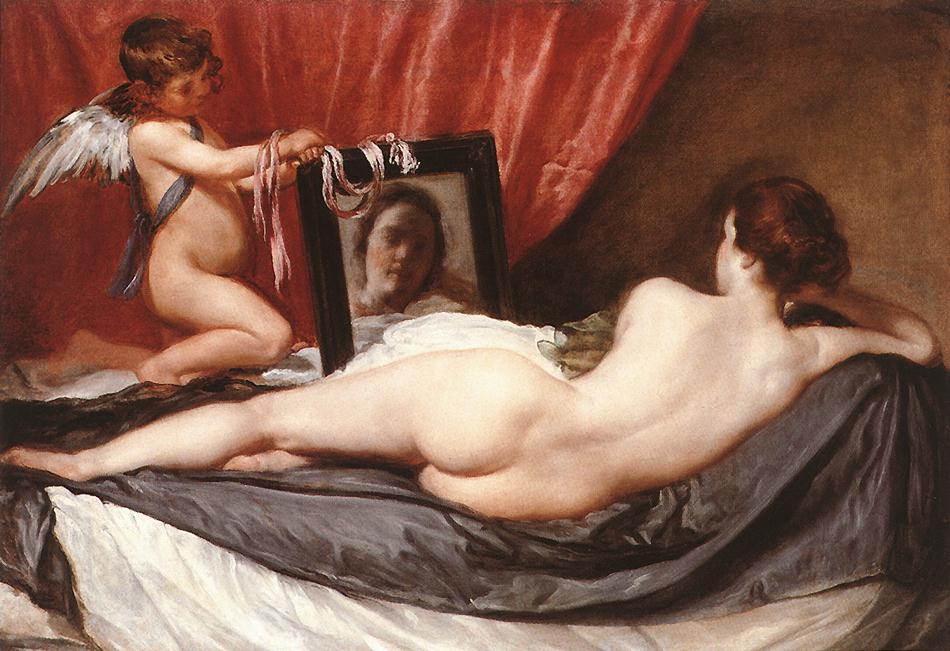
|

|
|
From: Web Gallery: "The Rokeby Venus is widely regarded,
along with Titian's Venus of Urbino, as "Venus is presented in a sensually erotic pose, and yet she seems chaste and is so completely merged with the overall image that she cannot be touched. Cupid, disarmed, without his bow and arrow, is holding a mirror, his hands bound by fragile pink fetters, condemned to do nothing and completely immersed in contemplation of the beautiful goddess. The mirror image - in defiance of all laws of optics - does not reveal the other side of Venus, but only permits a vague and blurred reflection of her facial traits. This may in fact indicate the underlying meaning of the picture: it is not intended as a specific female nude, nor even as a portrayal of Venus, but as an image of self-absorbed beauty. The goddess of love appears here as a mythical being with neither aim nor purpose, needing no scene of action, but blossoming before our very eyes as an image of beauty itself. "During the Inquisition pictures
were censored and artists who painted licentious or immoral paintings were
excommunicated, fined very heavily and banished. Rather than punish so
notable an artist as Velázquez, his Venus was accepted. Cupid and
the face to be seen in the looking-glass were, in all probability, strongly
overpainted in the eighteenth century. " (Web
Gallery)
Notes:
|

By: Natasha
Wallace
Copyright 1998-2003 all rights reversed
Created 11/17/2000
Updated 2/20/2003